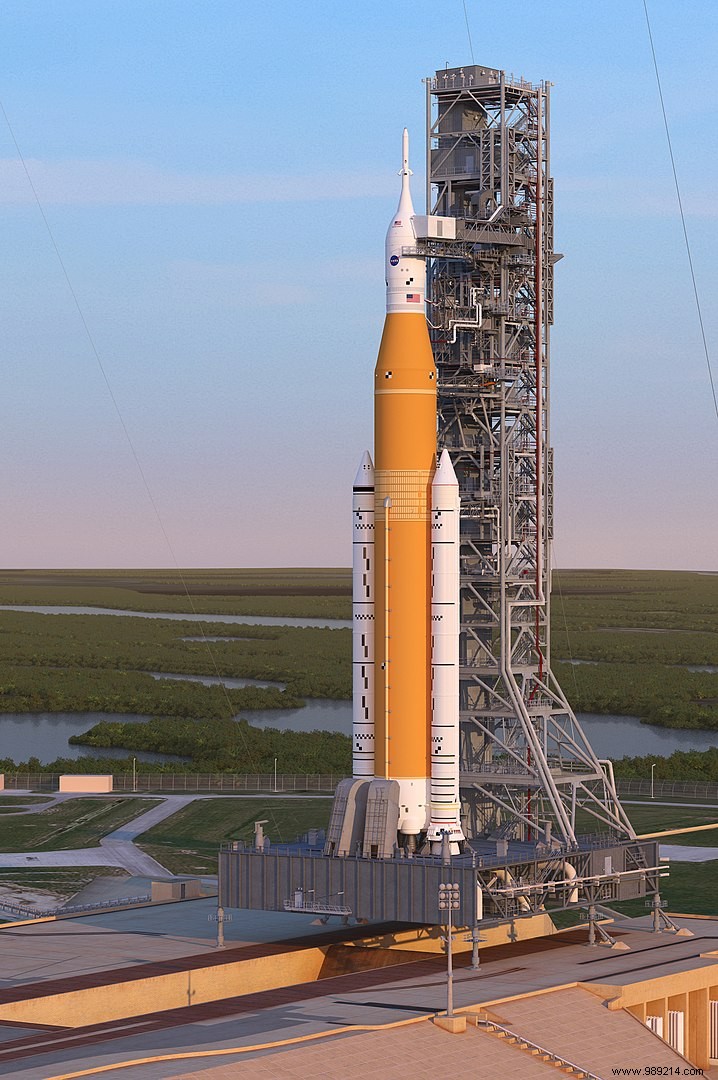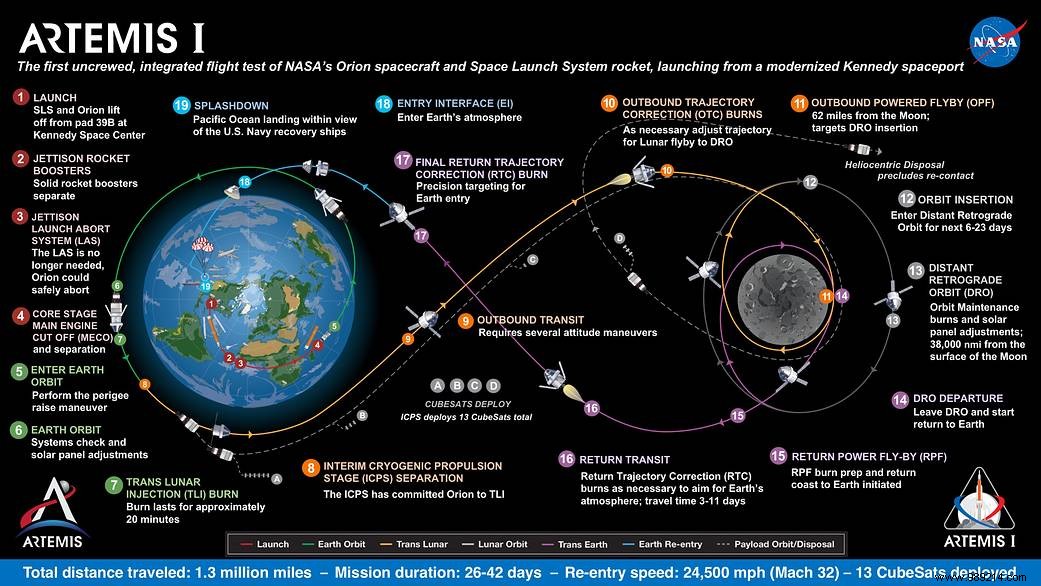In about a year, NASA will kick off its Artemis program, the most ambitious since the Apollo era. Here's everything you need to know about Artemis 1, the first phase of this huge project.
In 2017, the Trump administration asked NASA to set foot on the Moon in 2024. From this ambition was born the Artemis program , the first part of which will take place in three stages. The first, Artemis 1, will be an unmanned mission around the Moon. Next will come the Artemis 2 and Artemis 3 missions. The first will be a manned mission in orbit around the Moon, while the second will take astronauts to land on the lunar surface.
Note that the final objective of the Artemis program will be to establish permanent facilities in the South Pole region allowing crews to make long stays in space.
If all goes as planned, the launch of the first phase of this program is expected to take place in November 2021 from Launch Complex 39 at Kennedy Space Center (Florida).
As part of this Artemis I mission, the Orion capsule (supposed to later transport the astronauts (visible in the header photo) will be capped on the Block 1 version of NASA's heavy launcher under development:the Space Launch System (SLS).

During this mission, which must last about 26 days , the Orion spacecraft will make an Earth-Moon round trip following a trajectory similar to that of the Apollo 8 mission.
More concretely, after detaching from its launcher, the Orion capsule will take off towards our satellite, then fly over its "far side" at approximately 150 km from altitude . The spacecraft will then be injected into a more distant retrograde orbit that it will travel for six days before starting a second pass at low altitude. It will then be reinjected towards the Earth to finally land in the Pacific.
The diagram below illustrates how this course unfolds:

The main objective of this mission will be to validate the operation of NASA's new heavy launcher, as well as that of the Orion capsule. This will be tested during the different phases operated around the Moon.
Note that this ship will not carry a crew yet, but it will not fly empty either. The space available in the cabin will indeed be occupied by the MARE experiment (MATROSHKA AstroRad Radiation Experiment ). This will aim to measure the level of radiation exposure of the crew outside the regions protected by the Earth's magnetosphere . To do this, sensors will be installed on two mannequins that will occupy two of the available seats.
Finally, thirteen nanosatellites will also be stored in the adapter that connects the second stage of the launcher to the Orion capsule. They will be deployed at different intervals along the voyage. All of these instruments have been selected as part of NASA's NextSTEP program, which offers a partnership with companies to develop technologies to increase the duration and capacity of missions in deep space.>